
By Jill Lowe
I became aware of the ha-ha when studying English Landscape Garden History, and it has prompted me to look at its use in North America together with other means of defining boundaries.
“Fences make good neighbors,” it is said in Robert Frost’s 1914 poem ‘Mending Wall,’ but the attitude to fences is extremely varied. In courtyard urban gardens, very often, a high garden wall is common in larger suburban properties. The fashion has been to discard fences altogether.
In even larger properties, perhaps fencing is to contain animals or to keep animals out. Many have the desire to keep animals from entering the cultivated area of one’s property without a visual fence. The ha-ha fulfills this function: it being hidden from view serves to visually blend the cultivated areas from the rude and wild areas.
What is a ha-ha? Any connection with laughter?
No, no, it is a sunken fence that serves to unite in appearance, two surfaces necessary to be kept separate. It allows an uninterrupted view from the garden while not sacrificing security.
Why is it called a ha-ha? There are various explanations, all focused on surprise – thought to have stemmed from the exclamations by those coming across them, as the walls were intentionally designed so as not to be visible on the plane of the landscape.
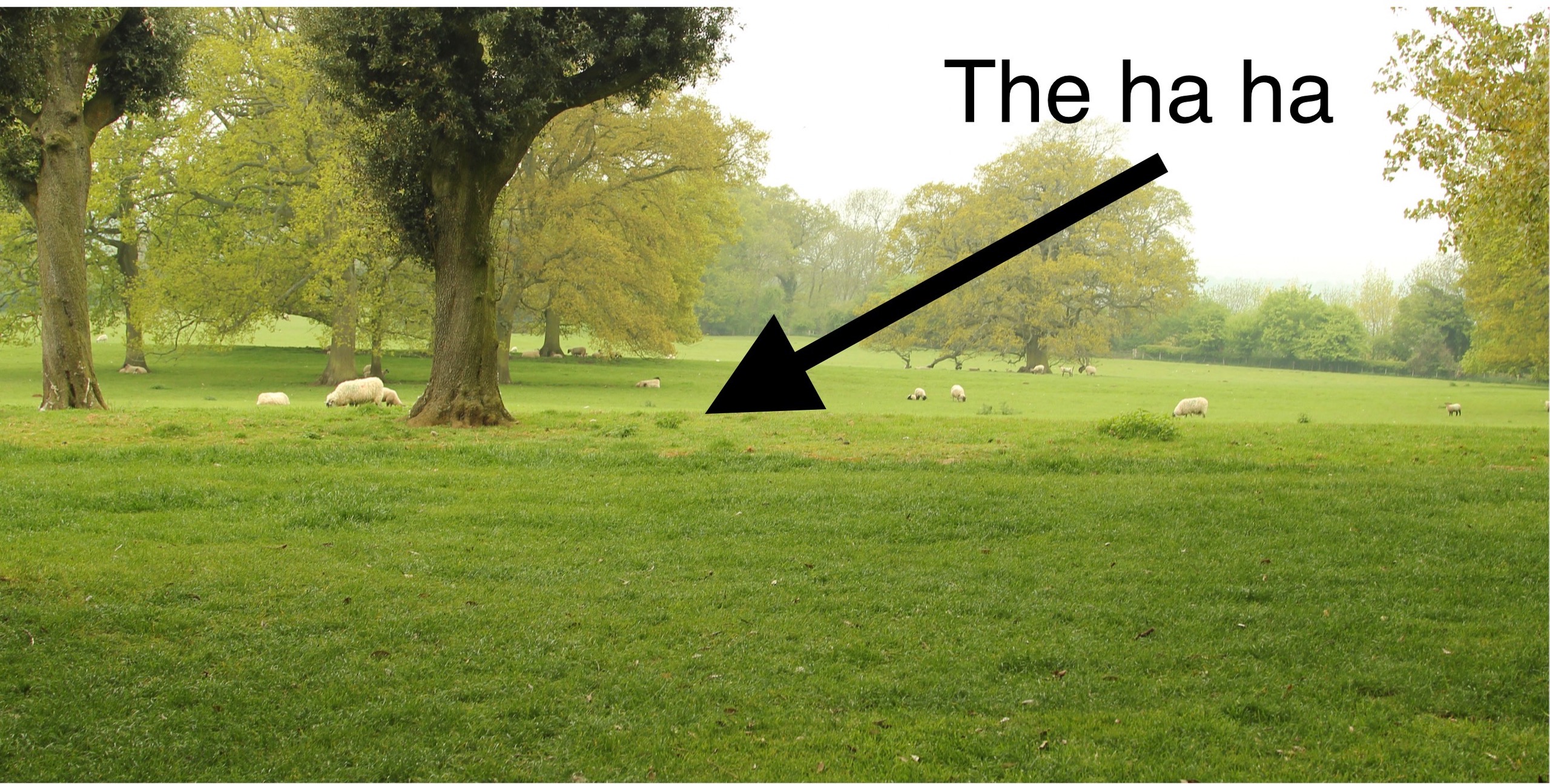
View across the ha-ha from Hidcote Manor Garden
(The modern descent of the ha-ha is the infinity edge pool, where our gaze extends to the horizon without visual barrier)
The ha-ha or sunken fence comprises a retaining wall on the garden side and on the other side, a slope visible enough for livestock to realize they cannot proceed further.
Spoken about in English garden history tomes, the ha-ha may have French origins, but we find Horace Walpole (1717-97), art historian and essayist, refer to his desire that where possible, enclosing walls should vanish, and by means of “an easy unaffected manner of fencing” it would look as if the adjacent country were all a garden. The motif which made this all possible was the ha-ha: Walpole called it a “capital stroke, the leading step to all that has followed”- an attempt then deemed so astonishing, that the common people called them ha-ha’s to express their surprise at finding a sudden and unperceived check to their walk.
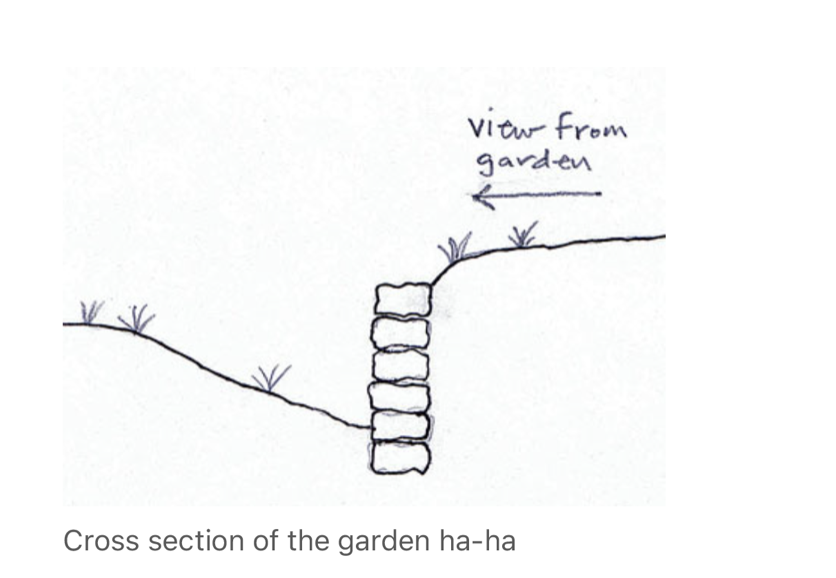
xxx |
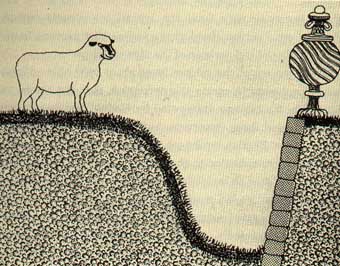
Drawings from Architessa 2011 |
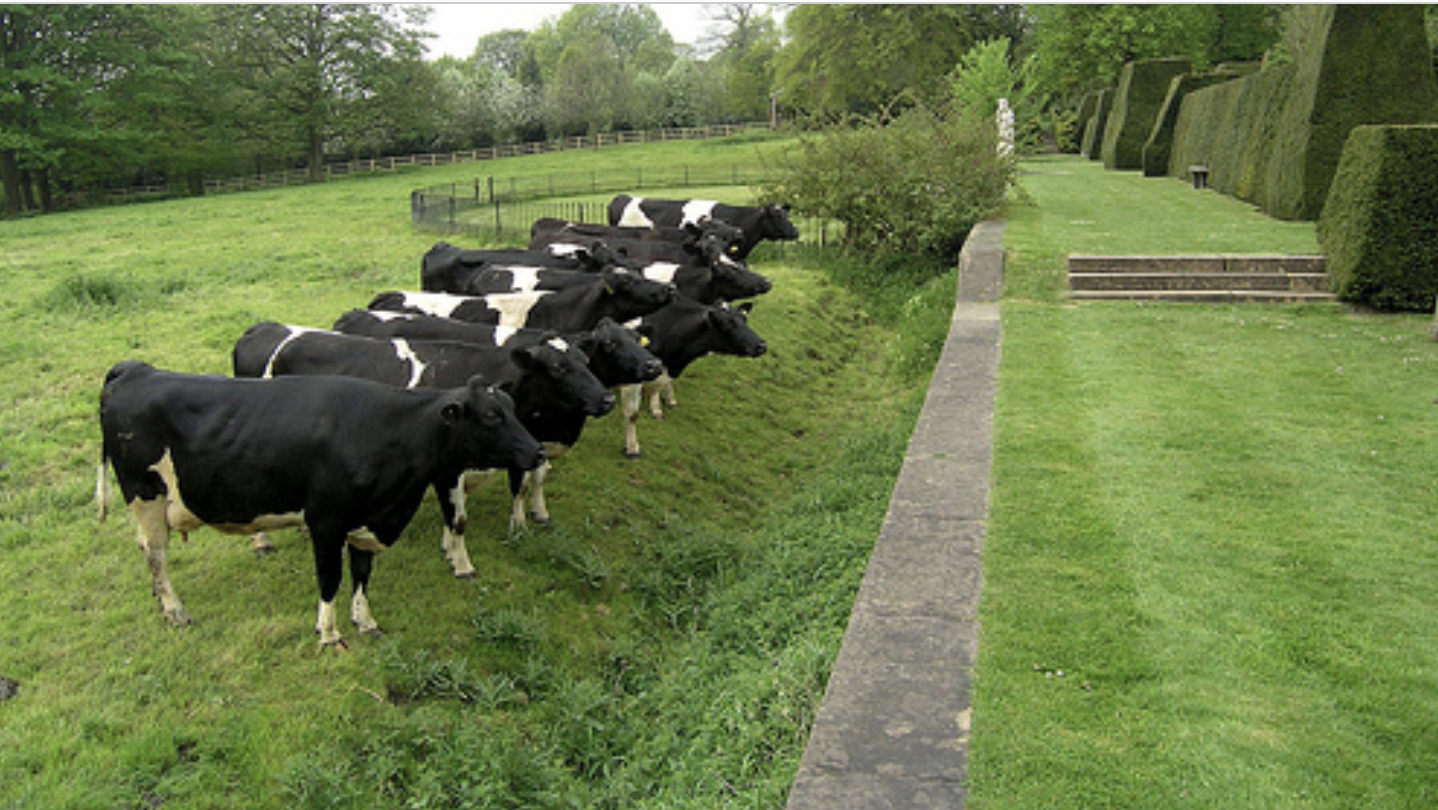
Many gardens have a ha-ha in England, including those at Rousham north of Oxford, and Hidcote Manor Garden in the north Cotswalds.
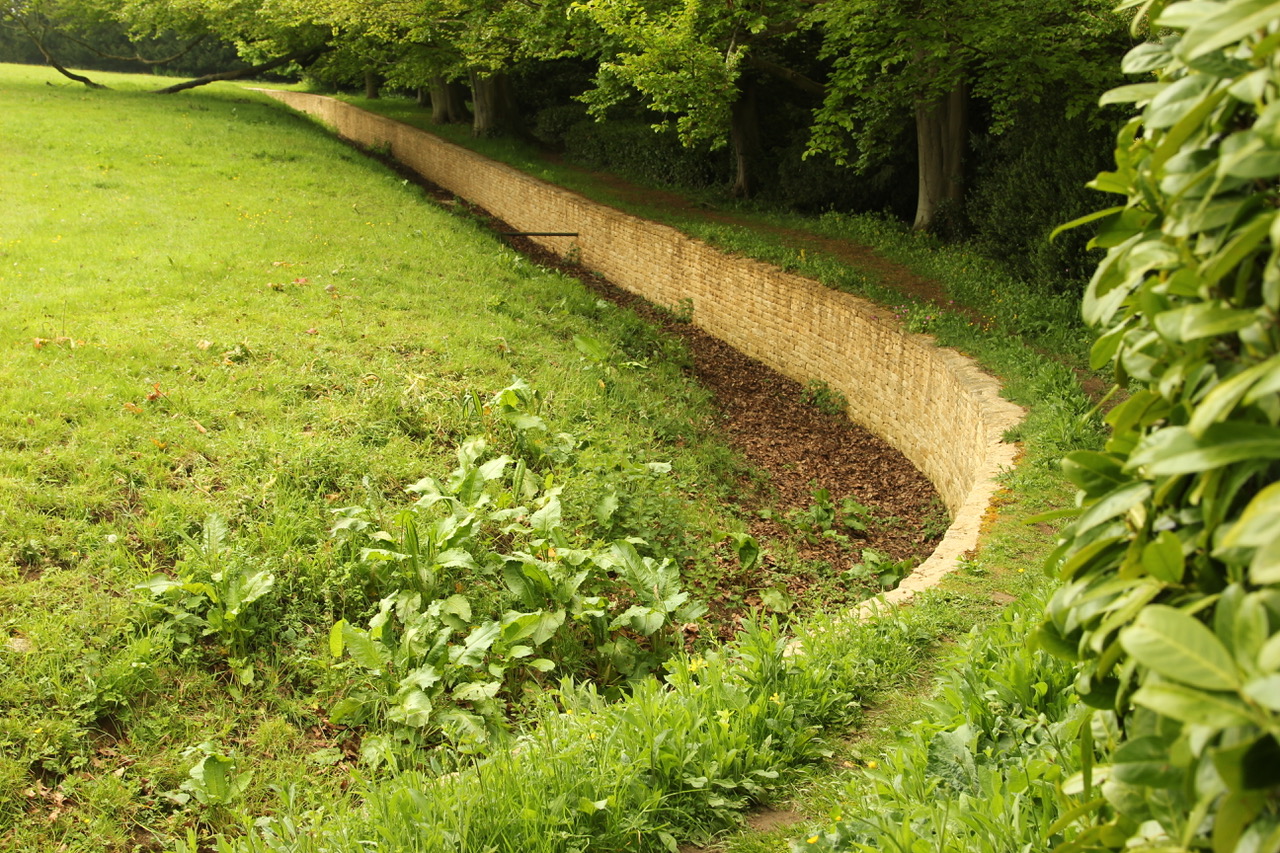 |
 |
Hidcote Manor Garden, an Arts and crafts-inspired garden was created by American-born Major Lawrence Johnston, a plantsman and garden designer. He designed the gardens in phases from 1907-1938. It is a most thrilling, extraordinary garden comprised of rooms, paved pathways, and magnificent vistas with long avenues, as seen below, rare shrubs, and of course, the ha-ha.
 |
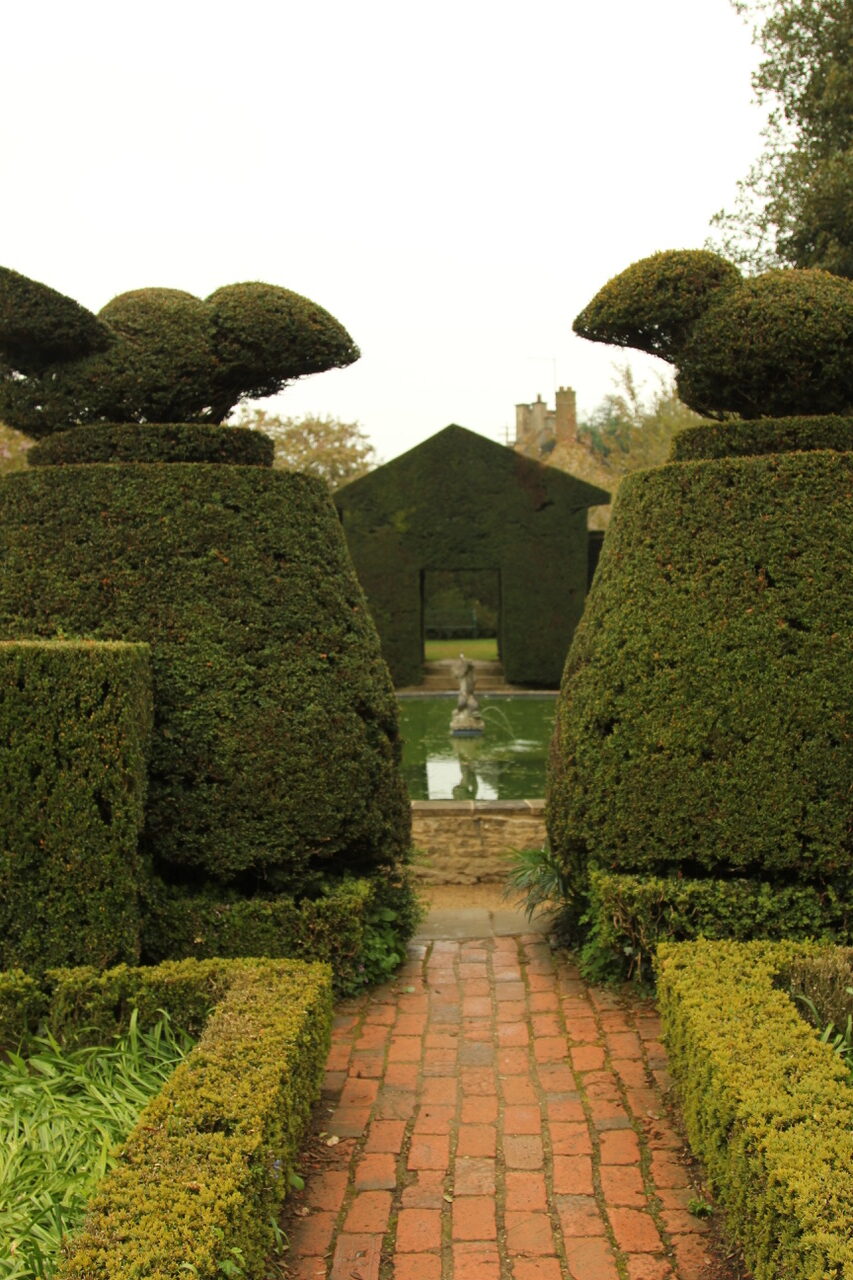 |
 |
(Major Johnstone’s other garden Serre de la Madrone just outside Menton on Cote d ‘Azure is not as well known as Hidcote Manor Garden, but a visit could well be combined with all the experiences described by Cheryl Anderson in this magazine December 2021 “About WaitingReturn to Menton”)
I’m told too there is a ha-ha in the Frank Cabot Garden “Les Jardins de Quatre-Vents” in La Malbaie, Quebec Canada, designed to keep out the Scottish Highland cattle.
In USA too, the ha-ha or sunk fence, or blind ditch was employed. The History of Early American Landscape Design (see link in notes) tells us however, that the feature seems to have been limited to larger estates such as that at Mount Vernon: Monticello, the Woodlands near Philadelphia and Park House in Albion, Illinois. John Penn’s estate (now Philadelphia Zoo) also indicates a placement of a ha-ha.
In USA, two examples of the use of the ha-ha to-day are associated with the nation’s Founding Fathers:
*the Jay Estate in Rye New York: The 23-acre property was the childhood home of John Jay, who is best known as the first chief justice of the United States Supreme Court but is perhaps even more notable for his early opposition to slavery. Together with his son Peter Augustus Jay, he oversaw the installation of gardens and elm tree plantings in Rye. He guided his son’s introduction of stone haha walls in 1822 as a means to frame not only the landscape, but specifically the wide open meadow that stretched to the water. The ha-ha walls served many functions as well as aesthetic purposes including: an uninterrupted view of the water from the mansion.
*the 21st-century use of a ha-ha at the Washington Monument is to minimize the visual impact of security measures. Because the ha-ha causes surprise, unsuspecting people suddenly become aware of its stealthiness. Step up the grassy hill about 30-40 feet, look downward toward the ha-ha wall, and the wall and walkway disappear from your view!
The ha-ha is a low granite stone wall that incorporates lighting and doubles as a seating bench.
However, it is a fact that the practice of the sunken fence is not an effective barrier to animals especially deer in USA and I’m guessing that in Australia, it is likely not a deterrent to kangaroos!
So for all the charm of the ha-ha, people have turned to other boundary structures, always keeping the purpose in mind eg to keep people or animals in or out, chickens or tennis balls in, to define or beautify a boundary, or for privacy, all with the use of different materials, shapes, sometimes combining them with foliage, hedges, vines or bushes.
Some photos of fencing follow – including use of solid concrete, corten steel, stone, pallets, lattice, louvred wood, laser cut steel, or variations of the picket.
 |
 |
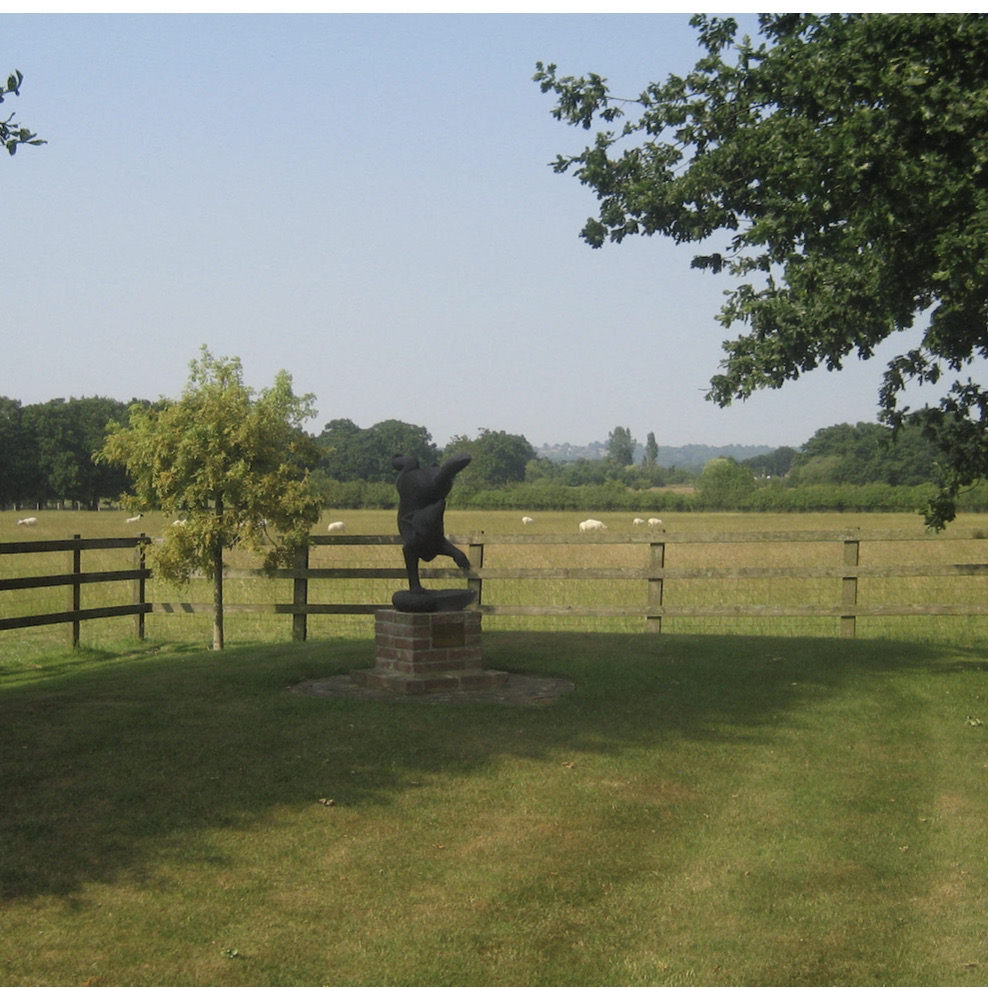 |
 |
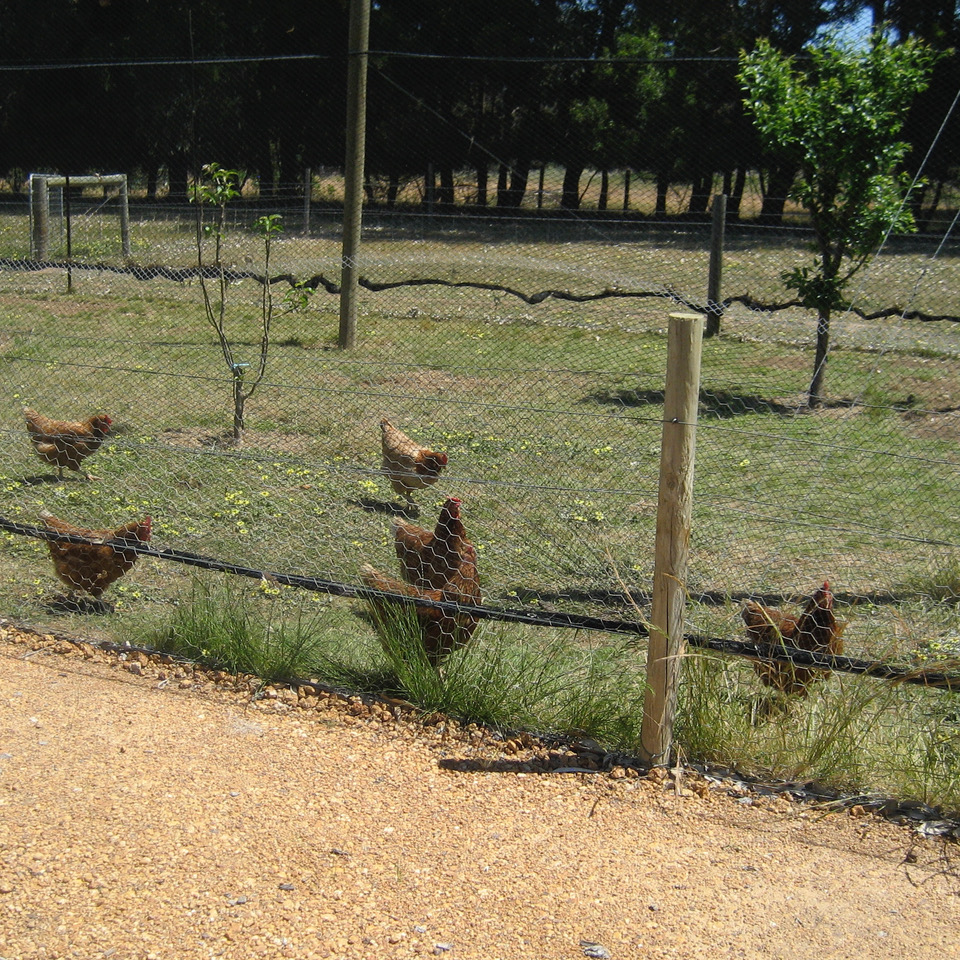 |
 |
 |
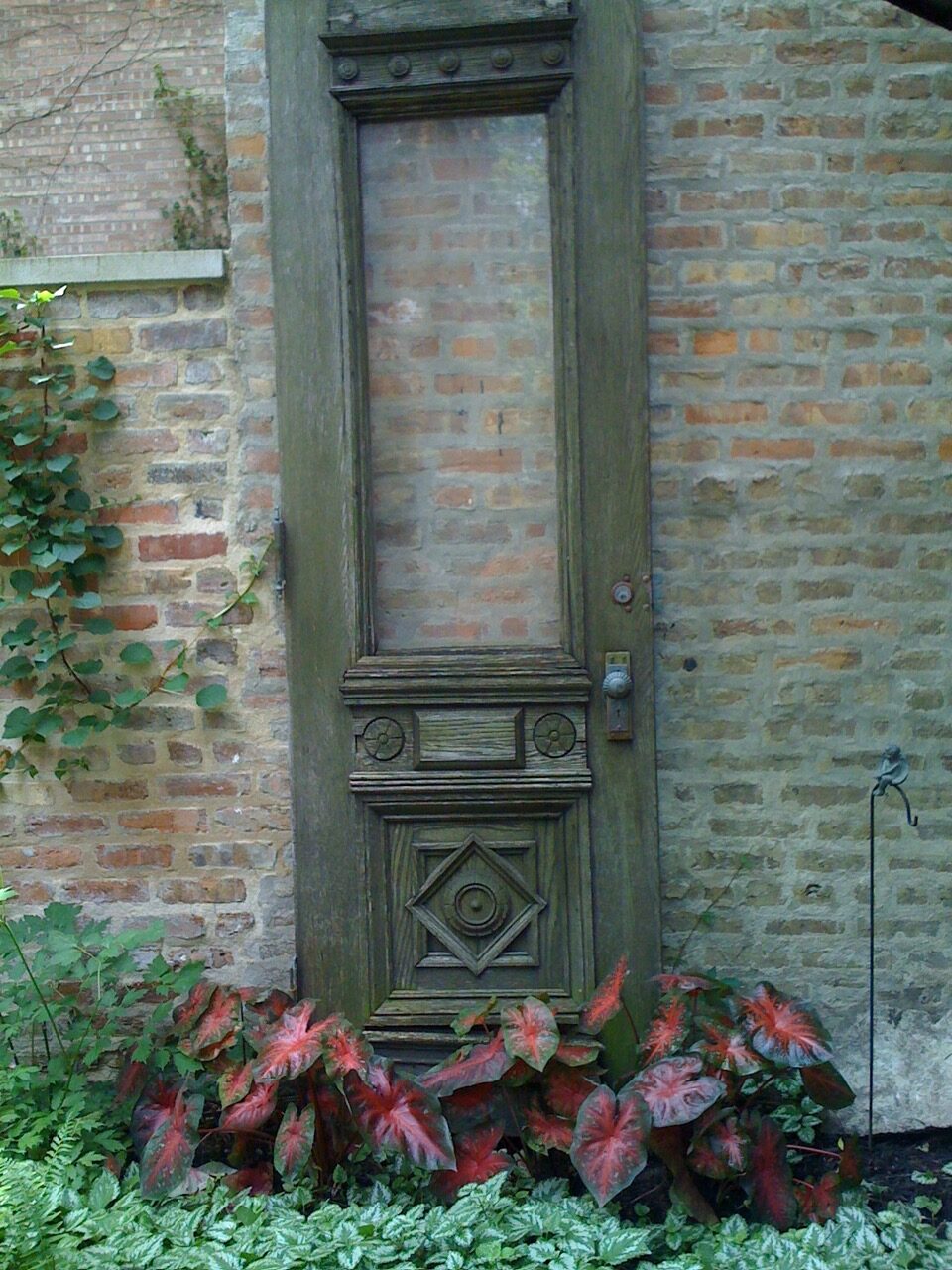 |
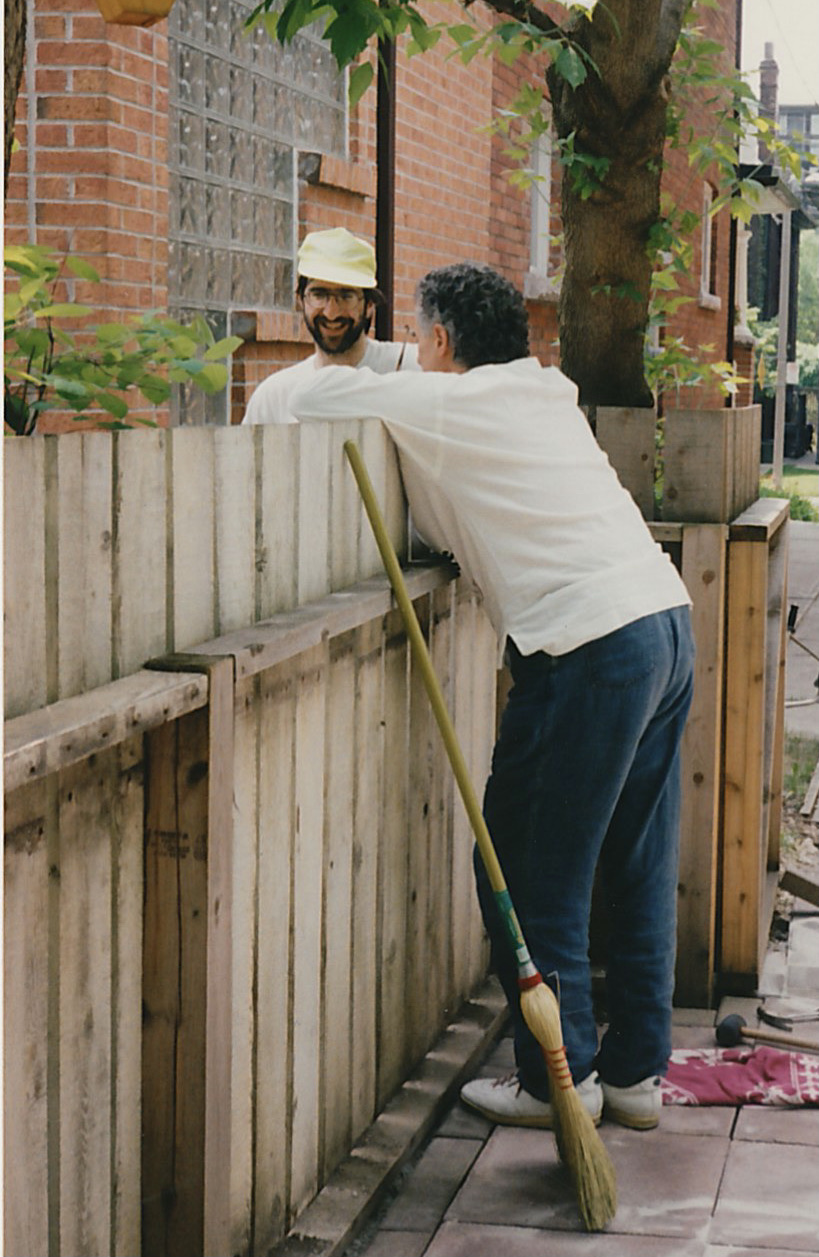 |
 |
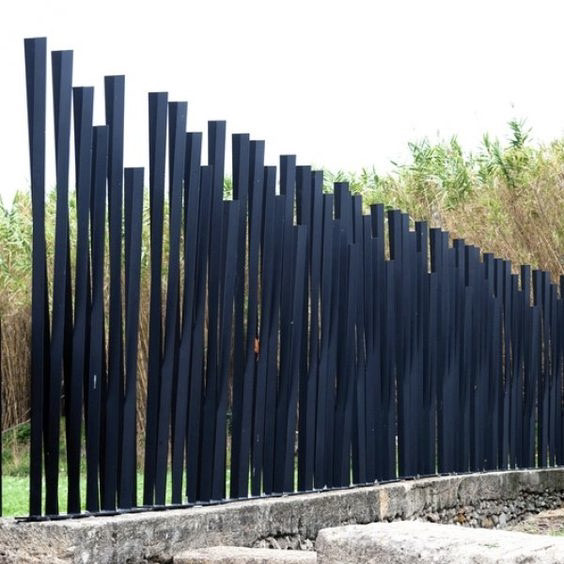 |
 |
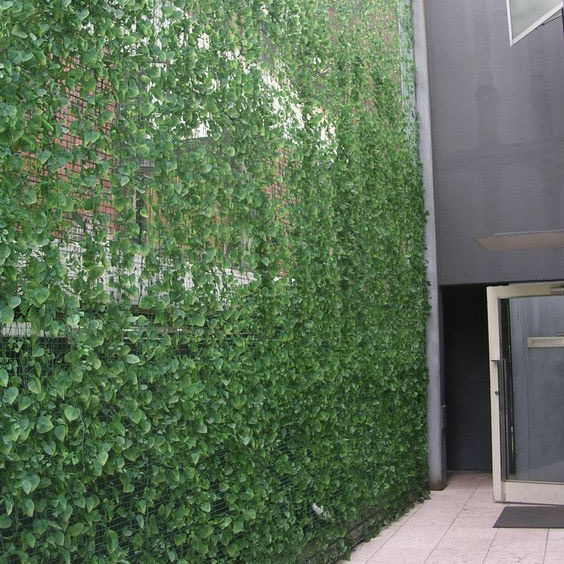 |
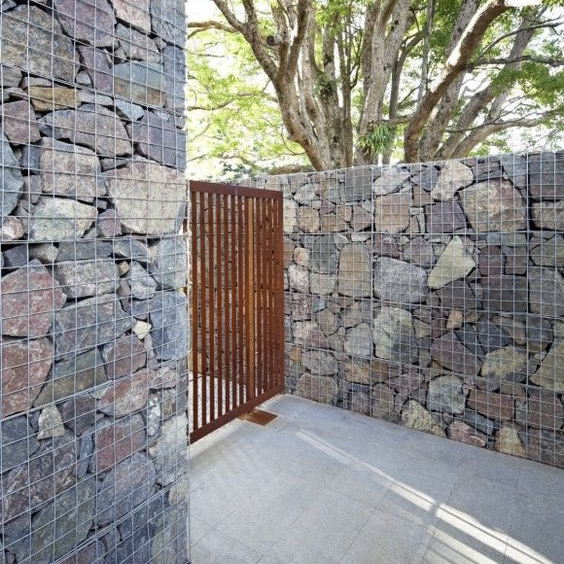 |
 |
 |
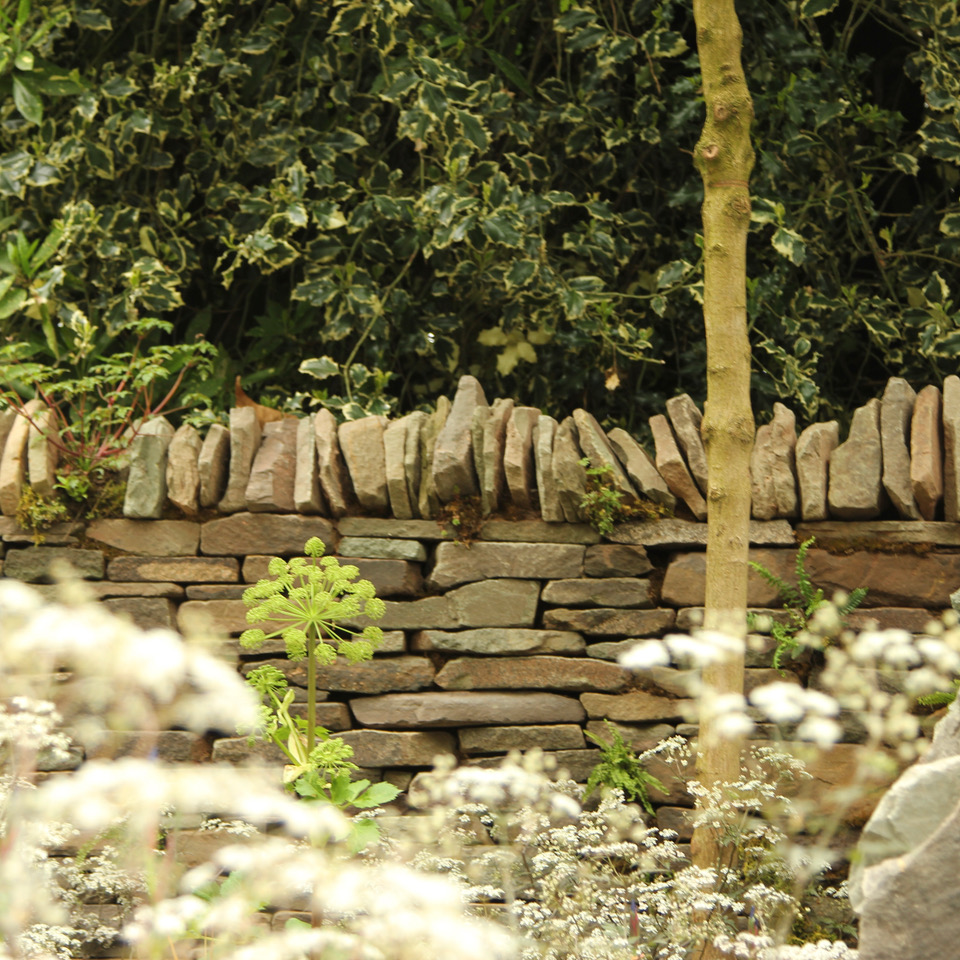 |
 |
 |
 |
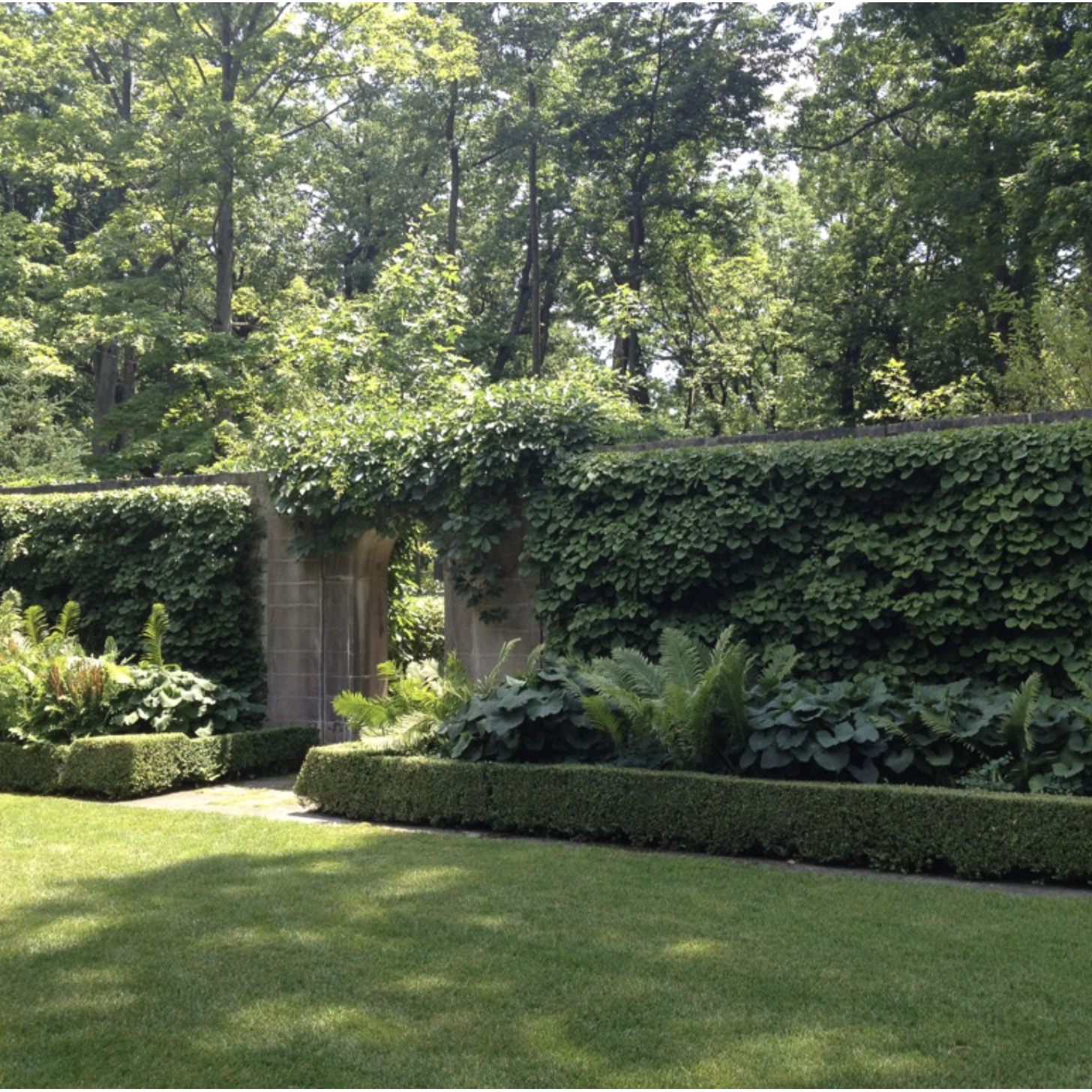 |
Well, I cannot let go of the quest to explore ways to make boundaries more camouflaged so as to be seamless with the country side. This photo below is a sculpture, with no intention of containing or enclosing anything. It’s ends are not attached to anything. It is a sculpture in the sculpture garden of Storm King Art Center in New York’s Hudson Valley. (link in notes) Mirror Fence 2003 is a simple picket fence, but when seen from a distance, it all but disappears. It is incredibly beautiful. Could this sculpture give ideas?

Photo with permission from www.flickr.com/photos/tackyjulie/28019723334 Photo by Flickr member tackyjulie Mirror Fence Alyson Shotz 2003
Notes
Photo of Jill : Joe Mazza Bravelux inc.
Photos not attributed- copyright © 2022 Jill Lowe. All rights reserved
Architessica: the significance of the Ha ha
Hidcote garden
Stormking Art Center
Book: THE GENIUS OF THE PLACE: The English Landscape garden 1620—1820 edited by John Dixon Hunt and Peter Willis









